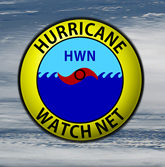 If you have a shortwave receiver (or even if you don’t), here are some frequencies you can keep in mind for tuning in to information about Hurricane Florence. Modern news media do an admirable job of getting the information out, but there’s something to be said for being able to tune in first-hand reports directly.
If you have a shortwave receiver (or even if you don’t), here are some frequencies you can keep in mind for tuning in to information about Hurricane Florence. Modern news media do an admirable job of getting the information out, but there’s something to be said for being able to tune in first-hand reports directly.
The best option is the Hurricane Watch Net (HWN), a group of amateur radio operators who will be on the air more or less continuously during the storm, taking reports from stations in the affected areas. Since most hams are able to get on the air without commercial power, this is often the first source of reports from damaged areas.
HWN formed informally during Hurricane Betsy in 1965, and now becomes active any time a hurricane approaches populated areas.
You can tune in to HWN on 14.325 MHz Upper Sideband (USB). An alternate frequency, which will be more active during the evening hours, is 7.268 MHz, Lower Sideband (LSB). Conditions on 20 Meters (14 MHz) have been poor in recent days, so it’s likely that there will be more reliance on the 7.268 MHz frequency.
Health and welfare messages from those affected by the hurricane will be heard on the Salvation Army Team Emergency Radio Network (SATERN), which will meet on 14.265 MHz USB.
If you have a shortwave receiver, you’ll want to tune to these frequencies for live updates. Even if you don’t own a receiver, there are many connected to the web, and you can listen online. Simply go WebSDR.org, find a receiver in North America, and tune to these frequencies.
For updated information about amateur radio involvement in the hurricane response, please check the ARRL news page.
You can also listen to live streams of many NOAA weather stations at this link.

